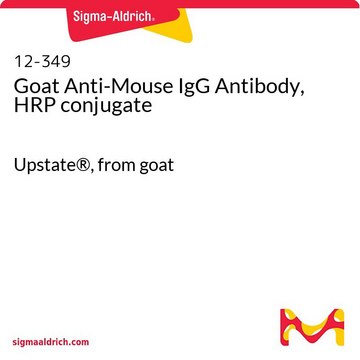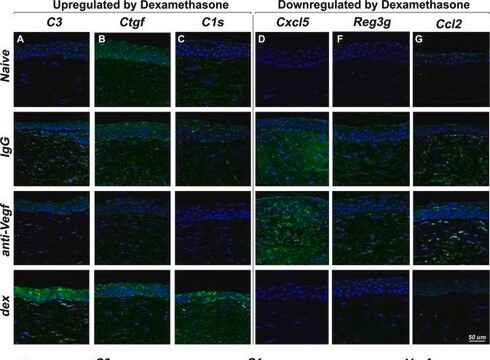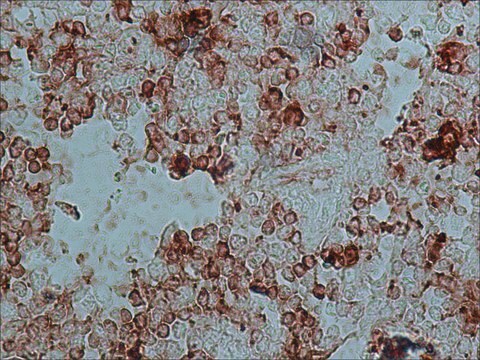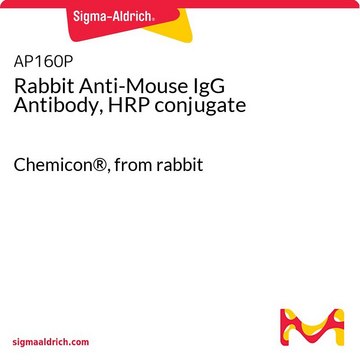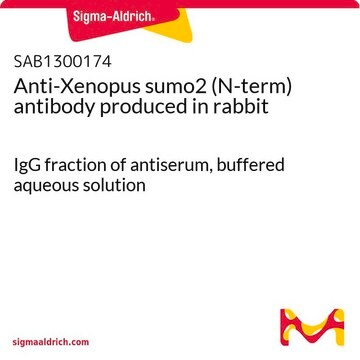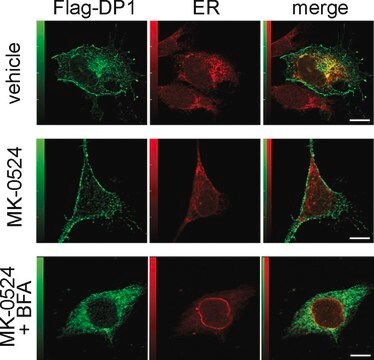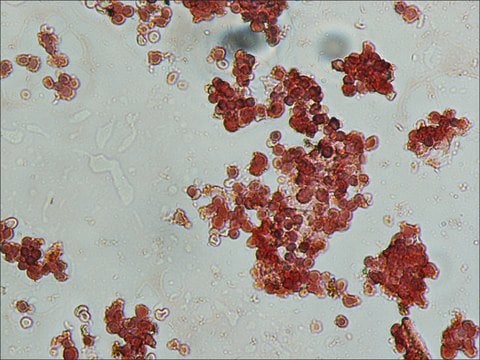A9044
Anti-Mouse IgG (whole molecule)–Peroxidase antibody produced in rabbit
IgG fraction of antiserum, buffered aqueous solution
Synonyme(s) :
Anti Mouse Antibody, Anti Mouse Antibody - Anti-Mouse IgG (whole molecule)–Peroxidase antibody produced in rabbit, Anti Mouse Hrp, Anti Mouse Hrp Sigma, Anti Mouse Igg, Sigma Anti Mouse Hrp
About This Item
Produits recommandés
Source biologique
rabbit
Niveau de qualité
Conjugué
peroxidase conjugate
Forme d'anticorps
IgG fraction of antiserum
Type de produit anticorps
secondary antibodies
Clone
polyclonal
Forme
buffered aqueous solution
Technique(s)
direct ELISA: 1:40,000 using using 5 μg/ml of mouse IgG for coating and OPD substrate
immunohistochemistry (formalin-fixed, paraffin-embedded sections): 1:200
western blot (chemiluminescent): 1:80,000-160,000
Conditions d'expédition
dry ice
Température de stockage
−20°C
Modification post-traductionnelle de la cible
unmodified
Description générale
IgG antibody is a glycoprotein, composed of two polypeptide chains (light and heavy), each possessing variable and constant domains. The variable region of IgG antibody is specific to antigens and is highly conserved.
Anti-Mouse IgG (whole molecule)-Peroxidase antibody is specific for all mouse IgG subclasses. IgG is purified from mouse serum by fractionation and ion exchange chromatography. The purified IgG is then conjugated to peroxidase by protein cross-linking with 0.2% glutaraldehyde.
Spécificité
Immunogène
Application
Actions biochimiques/physiologiques
Forme physique
Notes préparatoires
Stockage et stabilité
Clause de non-responsabilité
Vous ne trouvez pas le bon produit ?
Essayez notre Outil de sélection de produits.
Mention d'avertissement
Danger
Mentions de danger
Conseils de prudence
Classification des risques
Resp. Sens. 1 - Skin Sens. 1
Code de la classe de stockage
12 - Non Combustible Liquids
Classe de danger pour l'eau (WGK)
WGK 2
Point d'éclair (°F)
Not applicable
Point d'éclair (°C)
Not applicable
Certificats d'analyse (COA)
Recherchez un Certificats d'analyse (COA) en saisissant le numéro de lot du produit. Les numéros de lot figurent sur l'étiquette du produit après les mots "Lot" ou "Batch".
Déjà en possession de ce produit ?
Retrouvez la documentation relative aux produits que vous avez récemment achetés dans la Bibliothèque de documents.
Les clients ont également consulté
Notre équipe de scientifiques dispose d'une expérience dans tous les secteurs de la recherche, notamment en sciences de la vie, science des matériaux, synthèse chimique, chromatographie, analyse et dans de nombreux autres domaines..
Contacter notre Service technique



